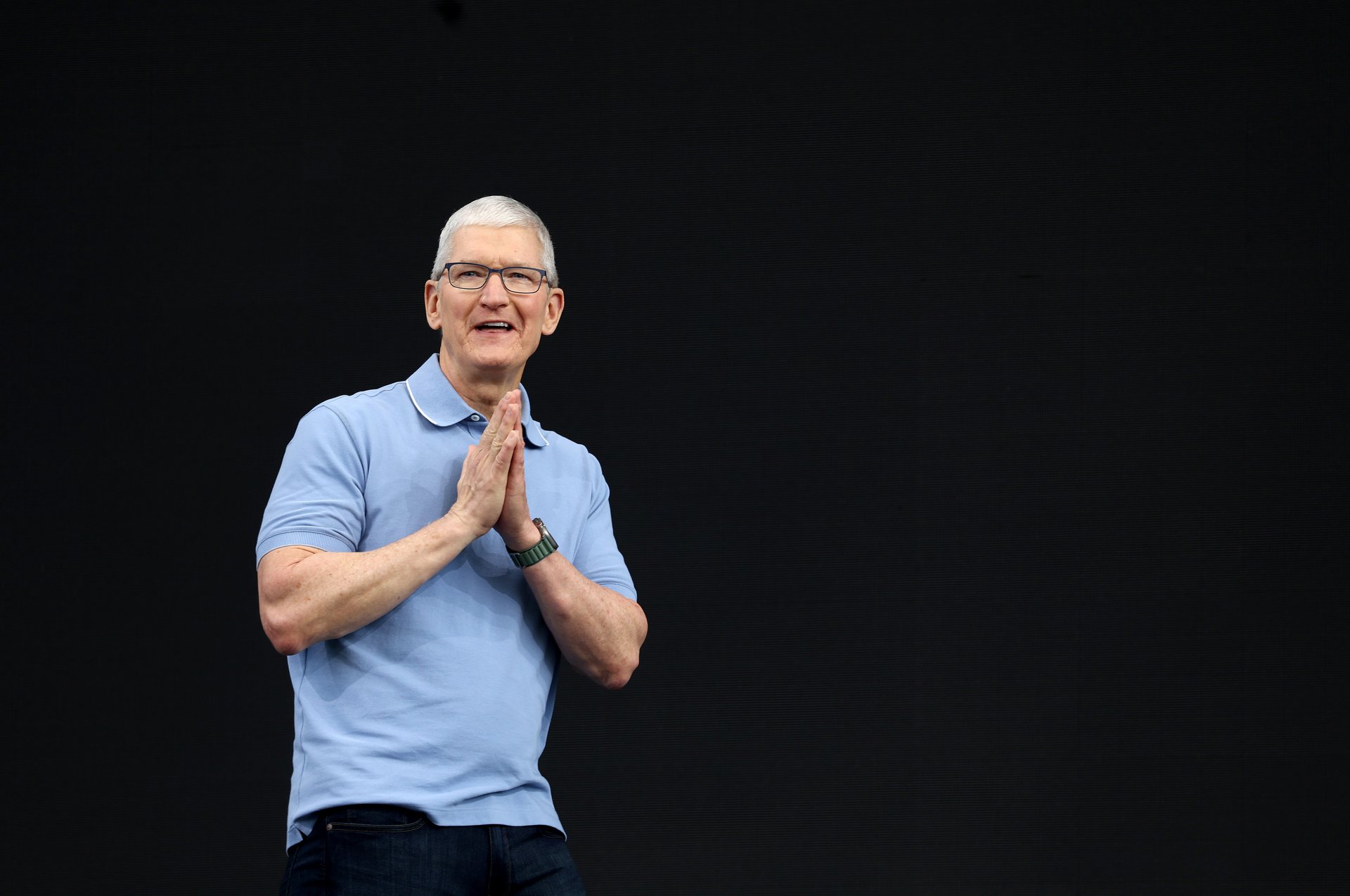Apple WWDC AI live updates: Apple reveals 'Apple Intelligence' and ChatGPT for iPhones
Apple is launching its own AI system, Apple Intelligence, which includes an AI-powered Siri update

Apple’s Worldwide Developers Conference is a chance for Apple executives to pretend they’re rockstars. This year is no different.
Suggested Reading
WWDC kicked off on Monday with a (fictional) video of Apple executives sky-diving into Apple headquarters, one of them wearing its Vision Pro headset. The video pans to a livestream of CEO Tim Cook: he’s standing by solar panels on Apple’s campus. Cook promised that this year’s WWDC would introduce “profound new intelligence capabilities” from Apple. And it did.
OpenAI, at last
Apple waited one hour and seven minutes into its keynote address to mention the elephant in the room: generative artificial intelligence.
Its simply-named collection of AI features, ‘Apple Intelligence,’ will take on the complex task of ensuring safety and personalization in the competitive AI market. And the company officially unveiled its partnership with OpenAI to integrate ChatGPT into its operating system.
Customers will be able to use ChatGPT 4-o on Apple’s latest iPhone operating system (iOS 18), iPadOS 18, and macOS Sequoia. Apple said it will also partner with other AI providers in the future.
Before WWDC, Cook had been quiet on AI — so quiet that doubters weren’t sure Apple would be able to catch up to its Big AI peers. But Apple may be finally proving them wrong.
Apple’s AI updates: Siri, Safari, & more
Apple’s new free AI features from Apple Intelligence were strewn throughout its product updates —more subtle than those from rivals at Google I/O and Microsoft Build. Unlike its competitors, Apple’s updates were about the features themselves and users’ experiences rather than flaunting the AI technology behind them.
Here are a few examples: Safari’s new AI Highlight feature, like Google’s AI Overviews, summarizes web content and highlights relevant information on internet pages. Apple introduced a live translation app for Apple Watch that’s supported by machine learning. Its new “Math Notes” tool for its native Calculator and Notes apps use AI to solve math problems, instantly answering users’ handwritten questions on iPads.
Its iPad feature “Smart Script” uses AI to edit users’ handwritten notes. And Apple Intelligence can be used to edit pictures or make drawings on iPads look better. Users can utilize new AI-powered writing tools for Mac to edit emails to sound more professional, casual, or transform them into literal poems.
But its biggest revelation was its Siri update, which now uses AI to process personal information in users’ iPhones to respond to requests such as “show me photos of my mom and dad.” Siri can also take actions in your apps for you — upon your request — such as editing photos, copy and pasting those photos into Notes, and sending those notes in iMessage.
Apple’s focus on privacy means its large language models typically work on users’ devices rather than utilizing server software. But Apple also launched “Private Cloud Computing,” its way of ensuring AI queries that do run on server software are protected and data is never stored by Apple.
Other updates: iMessage, Vision Pro, Game Mode
Apple started its 2024 WWDC by introducing its next generation mixed reality headset operating system, VisionOS 2, with new photo and video capabilities — which was the focus of its WWDC last year. The company said Vision Pro will now be available in Canada, France, Germany, Singapore, Japan, and China.
Apple also announced updates to Apple Wallet, iMessage, Journal, Photos, and Maps to allow for more customizations and further privacy features. It debuted Game Mode, a native Apple app for video games, and revealed that Airpods will now be able to filter out users’ background noise when they make phone calls.